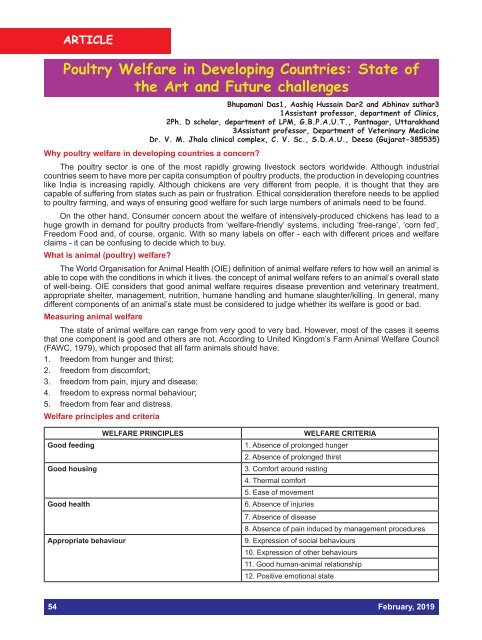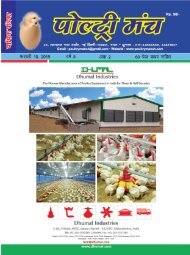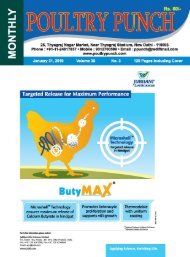POULTRY PUNCH - FEBRUARY 2019
POULTRY PUNCH - FEBRUARY 2019
POULTRY PUNCH - FEBRUARY 2019
- No tags were found...
Create successful ePaper yourself
Turn your PDF publications into a flip-book with our unique Google optimized e-Paper software.
ARTICLE<br />
NEWS<br />
Poultry Welfare in Developing Countries: State of<br />
the Art and Future challenges<br />
Bhupamani Das1, Aashiq Hussain Dar2 and Abhinav suthar3<br />
1Assistant professor, department of Clinics,<br />
2Ph. D scholar, department of LPM, G.B.P.A.U.T., Pantnagar, Uttarakhand<br />
3Assistant professor, Department of Veterinary Medicine<br />
Dr. V. M. Jhala clinical complex, C. V. Sc., S.D.A.U., Deesa (Gujarat-385535)<br />
Why poultry welfare in developing countries a concern?<br />
The poultry sector is one of the most rapidly growing livestock sectors worldwide. Although industrial<br />
countries seem to have more per capita consumption of poultry products, the production in developing countries<br />
like India is increasing rapidly. Although chickens are very different from people, it is thought that they are<br />
capable of suffering from states such as pain or frustration. Ethical consideration therefore needs to be applied<br />
to poultry farming, and ways of ensuring good welfare for such large numbers of animals need to be found.<br />
On the other hand, Consumer concern about the welfare of intensively-produced chickens has lead to a<br />
huge growth in demand for poultry products from ‘welfare-friendly’ systems, including ‘free-range’, ‘corn fed’,<br />
Freedom Food and, of course, organic. With so many labels on offer - each with different prices and welfare<br />
claims - it can be confusing to decide which to buy.<br />
What is animal (poultry) welfare?<br />
The World Organisation for Animal Health (OIE) definition of animal welfare refers to how well an animal is<br />
able to cope with the conditions in which it lives. the concept of animal welfare refers to an animal’s overall state<br />
of well-being. OIE considers that good animal welfare requires disease prevention and veterinary treatment,<br />
appropriate shelter, management, nutrition, humane handling and humane slaughter/killing. In general, many<br />
different components of an animal’s state must be considered to judge whether its welfare is good or bad.<br />
Measuring animal welfare<br />
The state of animal welfare can range from very good to very bad. However, most of the cases it seems<br />
that one component is good and others are not. According to United Kingdom’s Farm Animal Welfare Council<br />
(FAWC, 1979), which proposed that all farm animals should have:<br />
1. freedom from hunger and thirst;<br />
2. freedom from discomfort;<br />
3. freedom from pain, injury and disease;<br />
4. freedom to express normal behaviour;<br />
5. freedom from fear and distress.<br />
Welfare principles and criteria<br />
WELFARE PRINCIPLES<br />
Good feeding<br />
Good housing<br />
Good health<br />
Appropriate behaviour<br />
WELFARE CRITERIA<br />
1. Absence of prolonged hunger<br />
2. Absence of prolonged thirst<br />
3. Comfort around resting<br />
4. Thermal comfort<br />
5. Ease of movement<br />
6. Absence of injuries<br />
7. Absence of disease<br />
8. Absence of pain induced by management procedures<br />
9. Expression of social behaviours<br />
10. Expression of other behaviours<br />
11. Good human-animal relationship<br />
12. Positive emotional state<br />
54 February, <strong>2019</strong>






